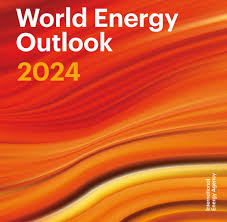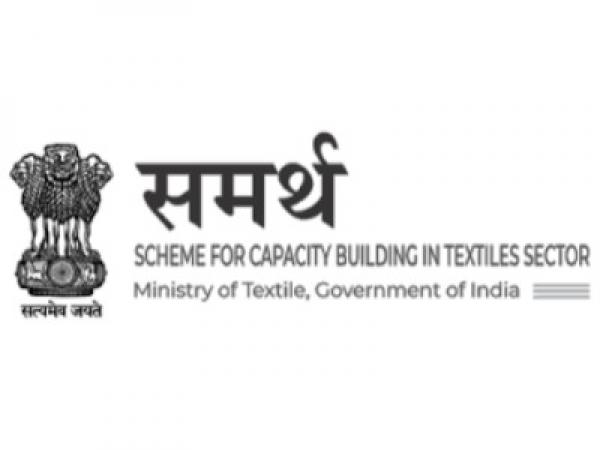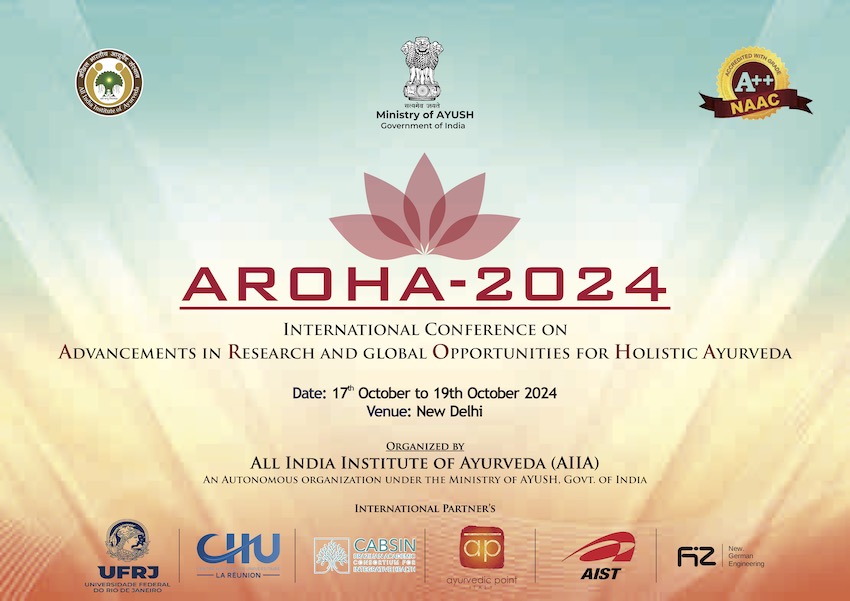World Energy Outlook 2024

- 17 Oct 2024
In News:
The International Energy Agency's (IEA) World Energy Outlook 2024 offers an in-depth analysis of global energy trends, emphasizing the shift towards clean energy, growing energy demand, and the effects of geopolitical conflicts.
Key Highlights:
- Economic Growth:
- India was the fastest-growing major economy in 2023 with a 7.8% growth rate.
- On track to become the world’s third-largest economy by 2028.
- Surpassed China in 2023 to become the most populous country globally, despite a fertility rate below replacement level.
- Energy Demand Surge:
- India is projected to experience the highest increase in energy demand over the next decade.
- By 2035, India’s total energy demand is expected to rise by 35%, driven by rapid industrialization, urbanization, and increased living standards.
- Urbanization and Infrastructure Growth:
- Over 12,000 cars are expected to be added to Indian roads daily by 2035.
- Built-up space is set to increase by over 1 billion square meters annually, surpassing the total built space of South Africa.
- Industrial Expansion:
- Iron and steel production is expected to grow by 70% by 2035.
- Cement output is set to increase by 55%.
- Air conditioner stock to grow more than 4.5 times, with electricity demand from cooling expected to exceed Mexico’s total consumption in 2035.
- Energy Supply & Coal:
- India’s electricity generation capacity is projected to nearly triple to 1,400 GW by 2035.
- Coal remains a dominant energy source despite growth in renewables:
- Coal-fired power capacity will increase by 60 GW by 2030.
- Coal will continue to account for over 30% of electricity generation even as solar PV expands.
- By 2035, coal use in industries like steel and cement will grow by 50%.
- Renewable Energy & Clean Tech:
- India is on track to become a global leader in renewable energy, with a nearly 3x increase in electricity generation capacity.
- The country is expected to have the world’s third-largest installed battery storage capacity by 2030.
- By 2030, low-emission energy sources (solar, wind, nuclear) are expected to generate over 50% of India’s electricity.
- Electric Vehicles & Oil Demand:
- The rapid adoption of electric vehicles (EVs) is expected to peak India’s oil demand by the 2030s, reducing reliance on oil for transportation.
- Oil demand for transport will decline as EVs proliferate, though demand for oil in other sectors (e.g., petrochemicals) will continue.
- Net Zero Target:
- India aims to achieve net-zero emissions by 2070.
- By 2035, clean energy generation could be 20% higher than current policy projections, thanks to electric mobility, hydrogen use, and improved energy efficiency.
- CO2 emissions are projected to be 25% lower than under the Stated Policies Scenario (STEPS).
- Policy Support:
- India’s clean energy goals are backed by government initiatives, such as:
- PM-KUSUM scheme for solar energy in agriculture.
- National Solar Mission.
- Production Linked Incentive (PLI) Scheme to boost domestic solar PV manufacturing.
- India’s clean energy goals are backed by government initiatives, such as:
- Global Energy Trends:
- Geopolitical Risks: Global energy security remains affected by geopolitical tensions (e.g., Russia-Ukraine conflict, Middle East tensions).
- Energy Transition: Global shift toward clean energy, with solar and wind power investments accelerating.
- Oil & Gas Surplus: Oil and LNG supply expected to increase, putting downward pressure on prices by the late 2020s.
- Electric Mobility: EVs projected to account for 50% of new car sales by 2030.
- Energy Efficiency: Despite efforts, global targets for doubling energy efficiency by 2030 are unlikely to be met with current policies.
IEA Overview:
- The International Energy Agency (IEA) provides analysis and policy advice on energy security, economic development, and environmental sustainability.
- Established in 1974, it now includes 31 member countries and 13 association countries, including India.
- Major publications: World Energy Outlook, India Energy Outlook, World Energy Investment Report.
India’s Semiconductor Market Projected to Surpass $100 Billion by 2030

- 17 Oct 2024
In News:
India's semiconductor market is poised to exceed $100 billion by 2030, according to a report from the India Electronics and Semiconductor Association and Counterpoint Research. Currently valued at $45 billion in 2023, the market is projected to grow at an annual rate of 13%, driven by demand in mobile handsets and IT sectors, which together account for over 75% of revenues.
Key Highlights:
- Growth Drivers: The growth is supported by strong demand for electronics and government initiatives like the production-linked incentive scheme. Semiconductors are essential for various industries, including electronics, defense, healthcare, and automotive.
- Importance of Semiconductors: These materials, which include silicon and germanium, are crucial for electronic devices. They can conduct electricity under certain conditions, making them fundamental in transistors, integrated circuits, and devices like LEDs and solar cells.
- Global Context: The global semiconductor supply chain has shown vulnerabilities, particularly during the chip shortage of 2021. Major producers include Taiwan (44% market share), China (28%), South Korea (12%), the U.S. (6%), and Japan (2%). Countries are now focusing on building domestic chip industries to reduce dependency on a few key suppliers.
Factors Favoring India's Growth in Semiconductors:
- Skilled Workforce: India has a vast pool of STEM graduates, providing a skilled workforce for semiconductor manufacturing and design.
- Cost Advantage: Lower labor costs and efficient supply chains position India favorably for semiconductor manufacturing.
- Supply Chain Diversification: India is becoming a hub for back-end assembly and testing operations, with potential for front-end manufacturing.
- Government Support: Initiatives like Semicon India and the India Semiconductor Mission aim to create a robust semiconductor ecosystem, offering substantial fiscal incentives for companies.
Government Initiatives:
- Semiconductor Fab Scheme: Provides 50% project cost support for semiconductor manufacturing.
- Display Fab Scheme: Offers similar support for display manufacturing.
- Chips to Startup (C2S) Programme: Trains 85,000 engineers across academic and R&D institutions.
- Recent approvals for the establishment of semiconductor plants in Gujarat and Assam further bolster this initiative.
Nobel Prize for Economics 2024

- 17 Oct 2024
In News:
The winners of this year’s Economics Nobel, or the Sveriges Riksbank Prize awarded for economic sciences, Daron Acemoglu, Simon Johnson and James Robinson (AJR), pioneers in new institutional economics, emphasised the role of institutions in the direction of development.
The Great Divergence
- Definition: Refers to the economic and political development gap between the West and East, particularly during the 17th and 18th centuries.
- Key Factors:
- Industrialization in Western Europe enabled the projection of political power globally.
- Colonial institutions established during this period have long-lasting effects on post-colonial nations.
Role of Institutions in Development
- Nobel Prize Winners: Daron Acemoglu, Simon Johnson, and James Robinson (AJR) awarded for their work in new institutional economics.
- Institutions Defined: Set of rules constraining human behavior, ensuring law and order, and preventing coercion.
- Types of Institutions:
- Extractive Institutions: Concentrate wealth among elites, historically prevalent in colonized regions (e.g., Sub-Saharan Africa, Latin America).
- Inclusive Institutions: Promote broader participation in economic growth, more common in countries like the U.S., Canada, and Australia.
Research Contributions
- Natural Experiments: AJR used historical data to show how differing colonial practices influenced economic outcomes.
- Key Findings:
- Areas with landlord-based colonial systems had lower agricultural investment and productivity.
- Regions under direct colonial rule lagged in infrastructure like schools and health centers.
Implications of AJR's Work
- Economic Institutions: Reflect collective choices shaped by political power, which can be either de jure (formal) or de facto (informal).
- Challenges in Reform: Conflicting interests often hinder agreement on the nature of beneficial institutions.
Critical Perspectives
- Skepticism of AJR's Framework: Some scholars argue that AJR's emphasis on Western liberal institutions overlooks the complexities of historical contexts, including corruption and systemic inequalities in early U.S. history.
- Modern Economic Dynamics: AJR caution against assuming that inclusive institutions will automatically lead to prosperity, as evidenced by concerns regarding China's future growth under extractive political systems.
Insights from Nobel Prize Research
- Key Focus Areas:
- Institutional structures in colonized countries significantly shape economic prosperity.
- Example of Nogales, Arizona, and Nogales, Mexico illustrates the impact of institutions on economic opportunities.
About the Nobel Prize Recipients
- Daron Acemoglu:
- MIT professor and co-author of influential works on power and prosperity.
- Advocates for democracy's role in economic growth while acknowledging its challenges.
- Simon Johnson:
- Former IMF chief economist, current MIT professor.
- Emphasizes the complexity of addressing entrenched poverty due to institutional frameworks.
- James A. Robinson:
- University of Chicago professor, co-author of works on economic disparity.
- Highlights historical transitions toward inclusive societies and their importance in economic development.
Nobel Prize in Economic Sciences
- Established: 1968 by the Swedish central bank.
- Purpose: Complement existing Nobel Prizes, recognizing contributions to economic sciences.
- Notable Previous Laureates: Include Claudia Goldin (2023) for gender pay gap research and Abhijit Banerjee et al. (2019) for poverty alleviation studies.
SAMARTH Scheme

- 17 Oct 2024
In News:
Samarth is a demand-driven and placement-oriented umbrella skilling program of the Ministry of Textiles. Samarth Scheme has been extended for two years (FY 2024-25 and 2025-26) with a budget of Rs. 495 Crore to train 3 lakh persons in textile-related skills.
Key Details:
- Scheme Name: Samarth (Scheme for Capacity Building in Textile Sector)
- Nodal Ministry: Ministry of Textiles
- Extension Period: FY 2024-25 and 2025-26
- Budget: ?495 Crores
- Target: Train 3 lakh individuals in textile-related skills
Objectives
- Skilling Programs: Provide demand-driven, placement-oriented training.
- Industry Support: Encourage job creation in organized textile and related sectors.
- Skill Enhancement: Focus on upskilling and reskilling in traditional sectors (handloom, handicraft, silk, jute).
Implementation
- Implementing Partners:
- Textile Industry/Industry Associations
- Central/State government agencies
- Sectoral Organizations (e.g., DC/Handloom, Central Silk Board)
- Current Achievements:
- Total Trained: 3.27 lakh candidates
- Employment Rate: 2.6 lakh (79.5%) have secured jobs
- Women Empowerment: 2.89 lakh (88.3%) women trained
Scheme Features
- Coverage: Entire textile value chain, excluding spinning and weaving.
- Training Focus:
- Entry-level skilling
- Upskilling/reskilling existing workers in apparel and garmenting
- Beneficiaries: Handicraft artisans and job seekers in the textile sector.
Background
- Cabinet Approval: The scheme is a continuation of the Integrated Skill Development Scheme from the 12th Five Year Plan.
- Implementation Agency: Office of the Development Commissioner (Handicrafts).
Advancements of Research & Global Opportunities for Holistic Ayurveda - AROHA-2024

- 17 Oct 2024
In News:
All India Institute of Ayurveda, New Delhi is organising its first-ever international conference - Advancements of Research & Global Opportunities for Holistic Ayurveda - AROHA-2024.
Key Details:
- Theme: "Advancements in Research & Global Opportunities for Holistic Ayurveda"
- Conference Goals
- Position Ayurveda as a key pillar of global health and wellness.
- Facilitate dynamic exchanges among scholars, industry leaders, and practitioners.
- Explore the integration of traditional Ayurvedic wisdom with modern scientific advancements.
- Agenda Highlights
- Topics Covered:
- Ayurveda and ethnomedicine
- Quality control and standardization
- Diagnosis and drug delivery
- Evidence-based understanding and globalization
- Topics Covered:
- Institute Background
- All India Institute of Ayurveda (AIIA): Apex institute for Ayurveda with NAAC A++, NABH, and ISO accreditations.
- Facilities: 200-bed referral hospital, 44 specialty departments.
- Global Collaborations: Partnerships with institutions in 17 countries, including London School of Hygiene and Tropical Medicine and Western Sydney University.
- Innovations: Focus on research, drug development, and scientific validation of Ayurvedic practices.
- Participant Benefits
- Networking Opportunities: Engage with experts in Ayurveda and holistic healthcare.
- Learning Experiences: Attend plenary sessions, round table discussions, and exhibitions on medicinal plants and startups in Ayurveda.
- Recognition: Awards for contributions to Ayurveda.
- Research and Innovation Focus: Discussions on technology integration, including AI and bioinformatics.
